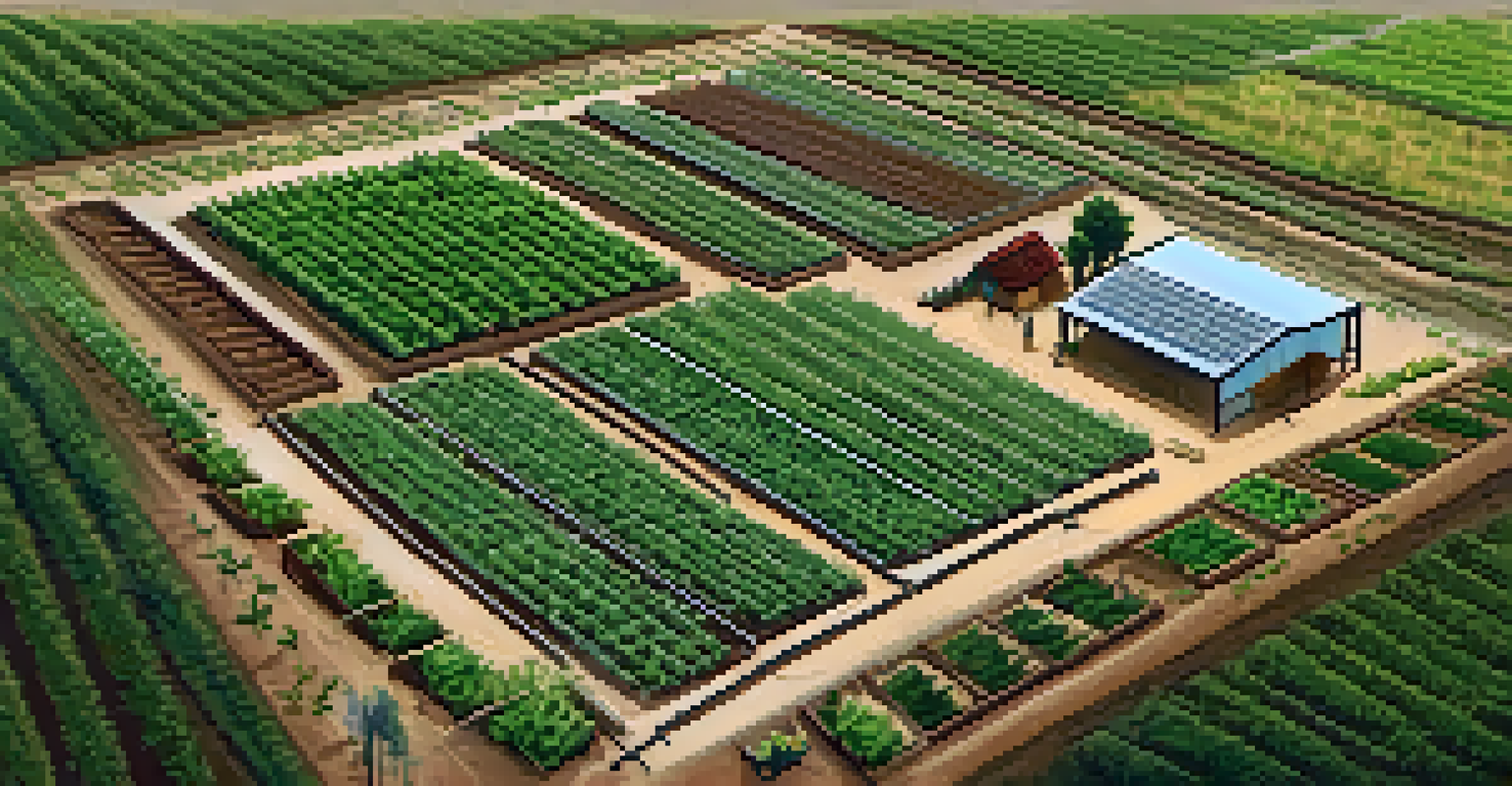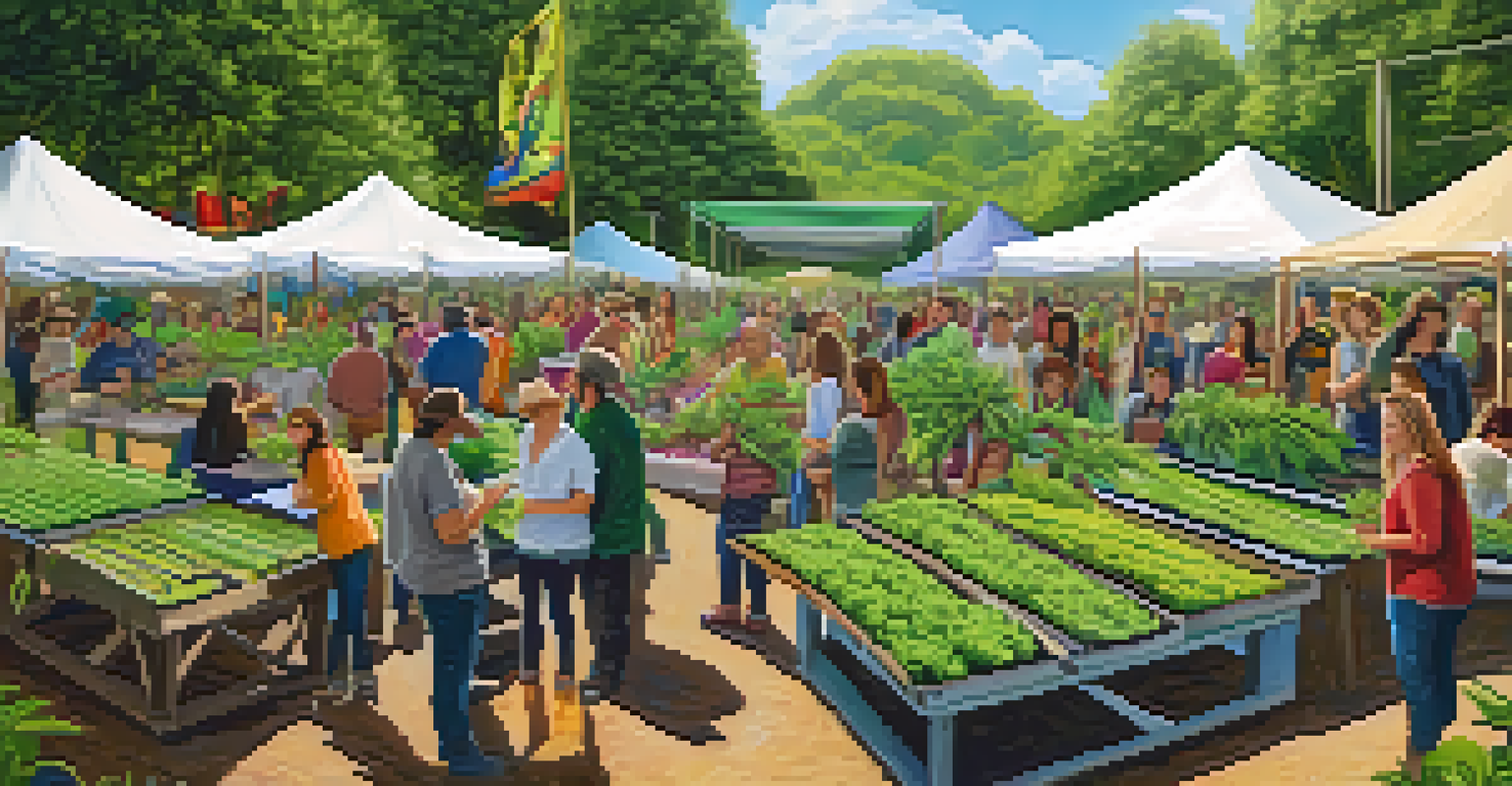Permaculture Principles Applied to Marijuana Farming Techniques

Understanding Permaculture: A Sustainable Approach to Farming
Permaculture is more than just a farming technique; it's a holistic design system that promotes sustainable living. At its core, permaculture integrates land, resources, people, and the environment in a way that is self-sustaining. This approach can be particularly beneficial for marijuana farming, where environmental conditions play a crucial role in plant health and yield.
The greatest threat to our planet is the belief that someone else will save it.
By observing natural ecosystems, permaculture practitioners can create systems that mimic these processes, leading to higher efficiency and productivity. For instance, using companion planting, where certain plants are grown together to benefit each other, can enhance the growth of marijuana plants while reducing pests naturally.
Implementing permaculture principles in marijuana farming can also lead to healthier soil and reduced reliance on chemical fertilizers. This not only produces safer, more organic products but also appeals to a growing market of environmentally conscious consumers.
Designing Your Marijuana Farm with Permaculture Principles
The first step in applying permaculture to marijuana farming is to design the layout of your farm wisely. This involves considering factors like sunlight, wind patterns, and water flow. By strategically placing plants, you can maximize sunlight exposure and create microclimates that can support healthy plant growth.

For example, planting taller companion plants on the north side of your marijuana crops can provide shade, helping to reduce heat stress during hot days. Additionally, incorporating elements like swales or rain gardens can capture and utilize rainwater effectively, conserving water resources while nurturing the plants.
Permaculture Enhances Marijuana Farming
Implementing permaculture principles leads to healthier plants, improved soil, and reduced reliance on chemicals.
A well-thought-out design not only enhances productivity but also creates a beautiful and functional landscape. This design ethos can attract more visitors to your farm, whether for tours or educational workshops, thus generating additional income.
Soil Health: The Foundation of Successful Marijuana Farming
Soil health is paramount in permaculture and is essential for successful marijuana farming. Healthy soil is teeming with life, including beneficial microorganisms that help break down organic matter and enhance nutrient availability. By focusing on building healthy soil, farmers can significantly improve their crop yields.
Sustainability is no longer about doing less harm. It’s about doing more good.
Techniques such as mulching, composting, and cover cropping can be employed to enrich the soil. For instance, using organic compost not only provides essential nutrients but also improves soil structure, aiding in water retention and drainage. This creates a thriving environment for marijuana plants to grow.
Moreover, healthy soil can resist pests and diseases more effectively, reducing the need for chemical interventions. This aligns perfectly with the organic movement, appealing to consumers who prioritize sustainability and health.
Water Management: Efficient Use in Marijuana Cultivation
Water is a precious resource, especially in farming. Permaculture emphasizes efficient water management practices that can be applied to marijuana cultivation. Techniques like rainwater harvesting and drip irrigation can help ensure that plants receive the right amount of moisture without unnecessary waste.
For example, creating a rain garden or installing a rain barrel can collect runoff water, which can be used during dry spells. This not only conserves water but also reduces the need for municipal water sources, leading to lower operational costs.
Efficient Water Management Strategies
Techniques like rainwater harvesting and drip irrigation ensure optimal moisture levels while conserving resources.
Additionally, implementing a drip irrigation system delivers water directly to the plant roots, minimizing evaporation and runoff. This precise method ensures that marijuana plants receive the hydration they need while also promoting deeper root growth.
Biodiversity: Enhancing Ecosystem Resilience in Marijuana Farms
Biodiversity is a core principle of permaculture, and it plays a vital role in creating a resilient marijuana farm. By introducing a variety of plants, you can attract beneficial insects and pollinators that help support the growth and health of your marijuana crops. This diversity can lead to a more balanced ecosystem.
Incorporating native plants and flowers alongside marijuana can enhance biodiversity, providing habitats for beneficial wildlife. These plants can also serve as natural pest deterrents, reducing the need for chemical pest control methods that can harm the environment.
Moreover, a diverse farm is less susceptible to disease outbreaks and pest infestations. If one crop fails, others may thrive, ensuring that the overall farm remains productive and sustainable.
Energy Efficiency: Reducing Carbon Footprint in Marijuana Farming
Energy efficiency is a crucial consideration in modern farming, including marijuana cultivation. Permaculture encourages practices that minimize energy use and reduce the carbon footprint associated with farming operations. Techniques like using renewable energy sources, such as solar or wind power, can make a significant impact.
For instance, installing solar panels can provide energy for lighting or irrigation systems, reducing dependency on fossil fuels. This not only lowers costs in the long run but also aligns with the values of sustainability and environmental responsibility.
Community Engagement Boosts Sustainability
Fostering community connections through workshops and local partnerships strengthens support for sustainable practices.
Additionally, designing farms to maximize natural light can reduce the need for artificial lighting, which is particularly important for indoor marijuana cultivation. This integration of energy-efficient practices can lead to both economic and environmental benefits.
Community Engagement: Building Relationships through Marijuana Farming
Permaculture isn't just about the land; it's also about community. Engaging with the local community can enhance your marijuana farming practices and create a supportive network. This can involve hosting workshops, farm tours, or community events that educate others about sustainable agriculture.
By sharing knowledge and experiences, you can inspire others to adopt permaculture principles in their own gardening or farming efforts. This not only strengthens community bonds but also fosters a culture of sustainability and environmental stewardship.

Collaborating with local businesses and organizations can also create beneficial partnerships. For example, sourcing inputs from local suppliers or participating in farmer's markets can enhance your farm's visibility while supporting the local economy.